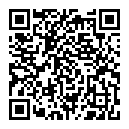Technical analysis tools are important assistants for traders to identify trends and judge entry and exit timings. Among them, the ZigZag indicator has become a must-have tool for many traders because of its unique function - filtering market noise and highlighting key price changes. In this article, EagleTrader will share some tips on using ZigZag indicators, hoping to help traders better use this tool to improve their trading efficiency.

Basic Principles of ZigZag indicator
ZigZag indicator, full name ZigzagOnParabolic, is a technical indicator formed by connecting a series of price highs and lows. It is based on a preset percentage threshold that is marked as an important high or low when the price moves beyond this threshold. These highs and lows are connected by a polyline to form a ZigZag graph that clearly shows the price fluctuation trend.

The main parameters of the ZigZag indicator include Depth, Deviation, and Backstep. Depth means how many K-lines are connected each time, which is equivalent to the time period of changing the trend line; Deviation means the error value used to correct the polyline; Backstep means the number of K-lines used to measure the correction. The settings of these parameters will directly affect the shape of the ZigZag graph and the accuracy of the trading signal.
The core functions of the ZigZag indicator
Identify the trend direction
ZigZag indicators visually display the main trend of the price by connecting highs and lows. The rising ZigZag line represents an upward trend, and the falling ZigZag line represents a downward trend. Traders can quickly judge the overall direction of the current market by observing the slope of the ZigZag line.
Simplify chart analysis
ZigZag indicators mark highs and lows when prices undergo significant reversals. These points are often important support or resistance levels, providing traders with potential entry or exit signals.
Simplify chart analysis
Forex market fluctuates frequently, and price charts are often full of noise. The ZigZag indicator filters small fluctuations, allowing traders to focus on important price changes, thereby more clearly identifying technical patterns (such as head and shoulders tops, double bottoms, etc.).
Trading skills for ZigZag indicator
1. Combining support and resistance levels
The highs and lows marked by the ZigZag indicator are usually key support and resistance levels. Traders can combine these levels to develop trading strategies. For example:
When the price is close to the ZigZag markAt the previous high point, you may encounter resistance, so consider shorting.
When the price approaches the previous low marked by ZigZag, you may encounter support and consider going long.
2. Identify the continuation or reversal of the trend
ZigZag indicator can help traders determine whether the trend may continue or reversal. For example:
In an upward trend, if the high and low points of the ZigZag line gradually move up, it indicates that the trend may continue.
If the high point of the ZigZag line starts to move downward, it may indicate a trend reversal.
3. Use in combination with other indicators
Although the ZigZag indicator is powerful, it may have lag when used alone. Therefore, it is recommended to confirm it in combination with other technical indicators (such as moving averages, RSI, MACD, etc.). For example:
When the ZigZag indicator shows a price reversal, if the RSI has an overbought or oversold signal at the same time, the reliability of the trading signal can be increased.
4. Identify technical forms
ZigZag indicator can help traders identify technical forms more clearly. For example:
Head and Shoulder Top: ZigZag line marks the high points of the left shoulder, head and right shoulder.
Double bottom: The ZigZag line marks two low points, forming a double bottom pattern.
5. Set reasonable parameters
The effect of the ZigZag indicator is highly dependent on parameter settings. If the parameter setting is too small, the ZigZag line will be too sensitive and generate a lot of noise; if the parameter setting is too large, important price changes may be missed. It is recommended to adjust parameters according to the volatility of the trading symbol. For example:
For currency pairs with higher fluctuations (such as GBP/JPY), a larger percentage (such as 5%) can be set.
For currency pairs with less volatility (such as EUR/CHF), a smaller percentage (such as 2%) can be set.
Although the ZigZag indicator may not be well-known, its application value in foreign exchange trading cannot be underestimated. Through in-depth understanding and flexible use of ZigZag indicators, traders can more accurately identify market trends, determine support and resistance levels, and capture turning points. However, in the volatile market, the ZigZag indicator may frequently mark the reversal point, causing signal confusion. Therefore, it is recommended to combine other technical indicators and fundamental analysis to improve the accuracy of trading signals. In addition, traders should flexibly adjust the parameters of ZigZag indicators according to their trading style and market characteristics to achieve the best results.

Incubate the world's top traders
Participate in 90% profit sharing


